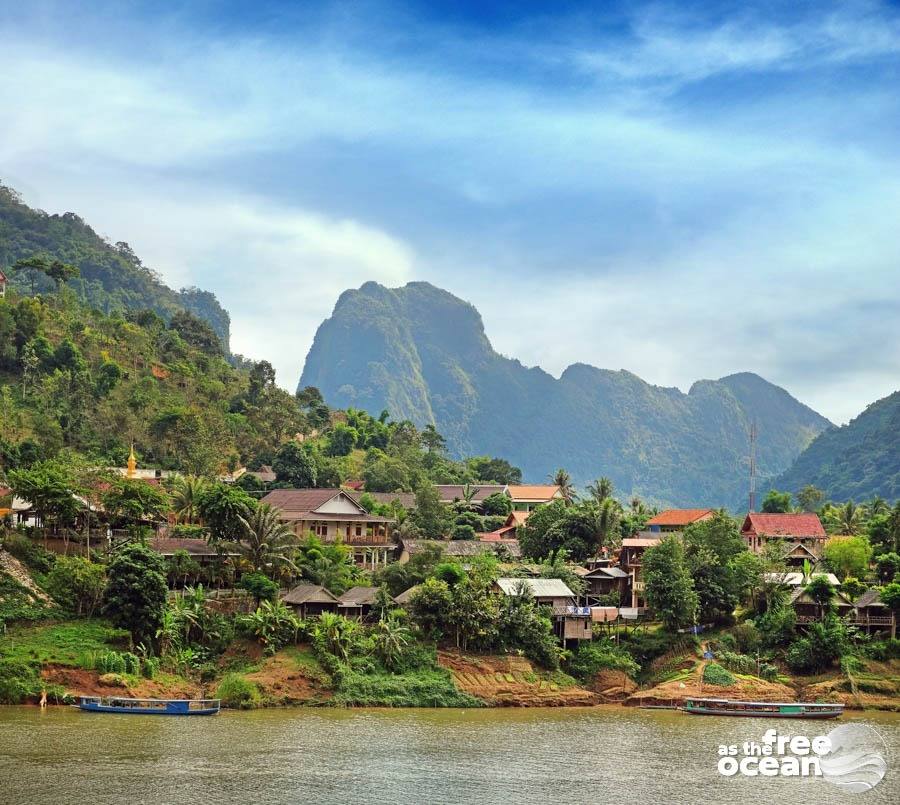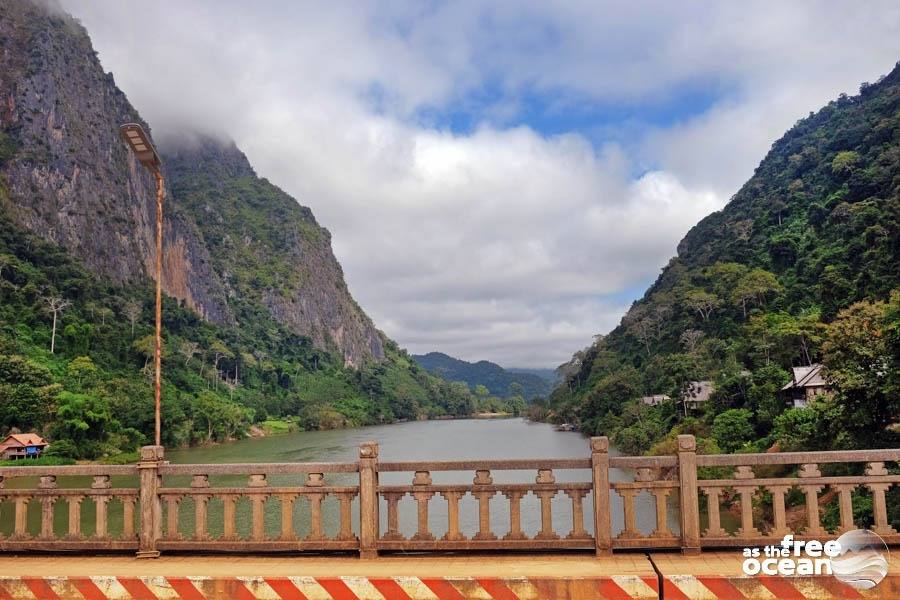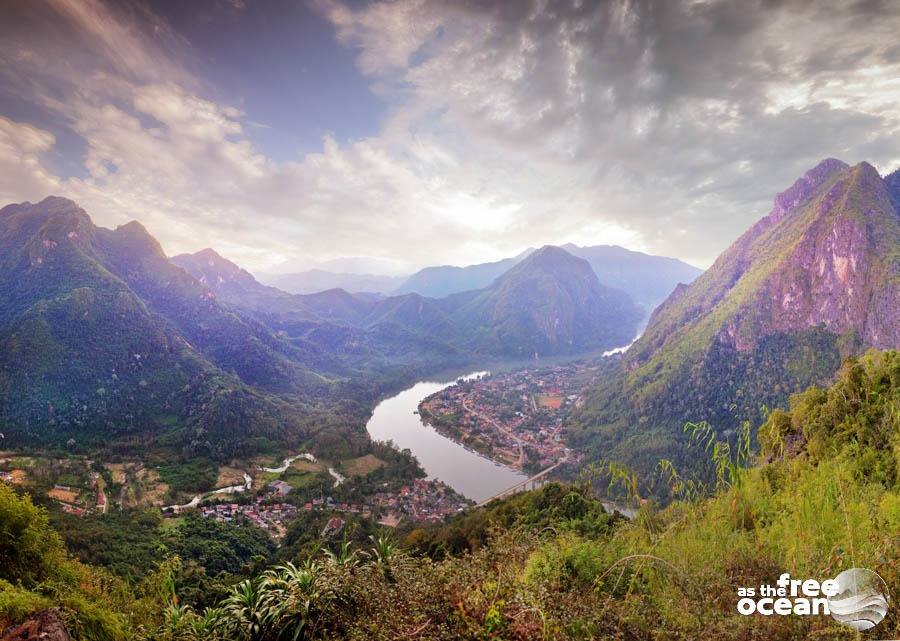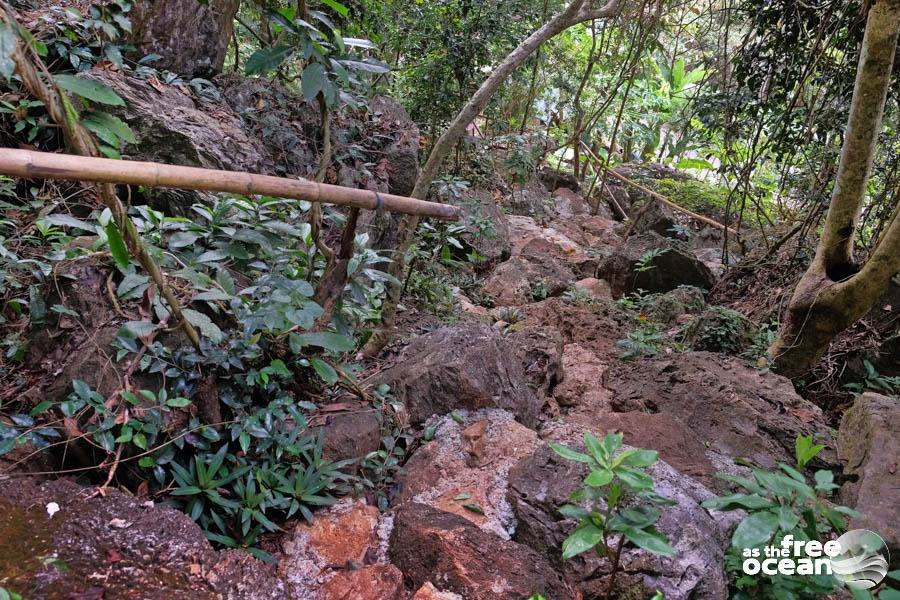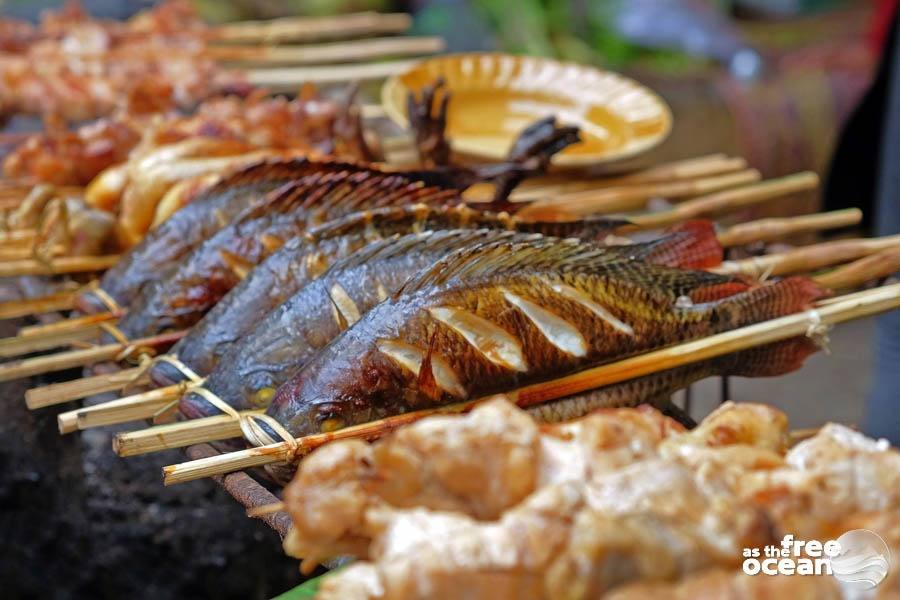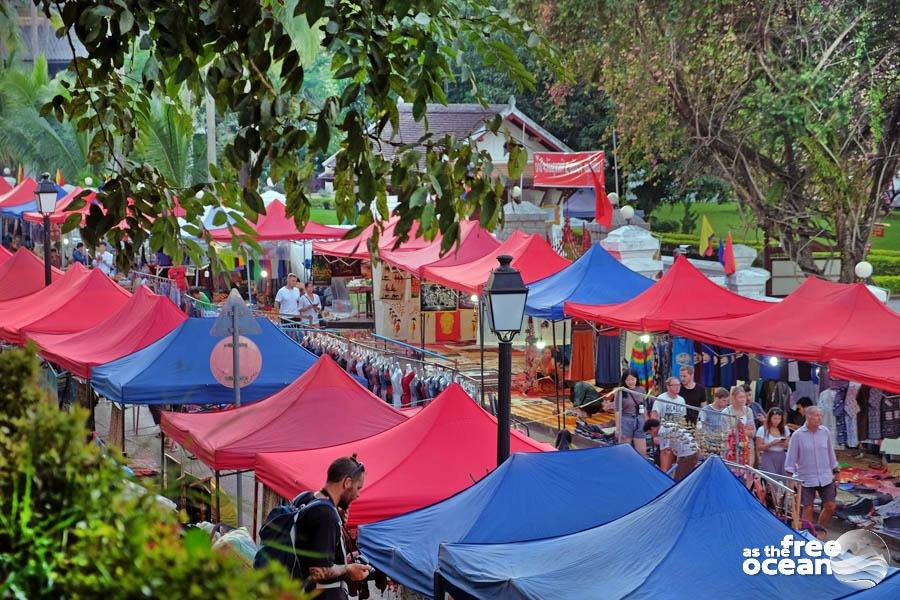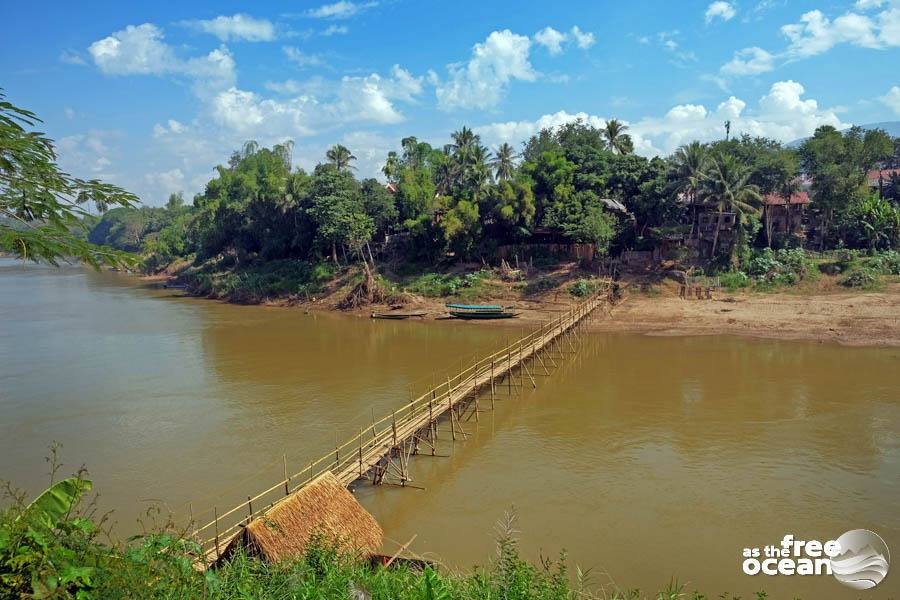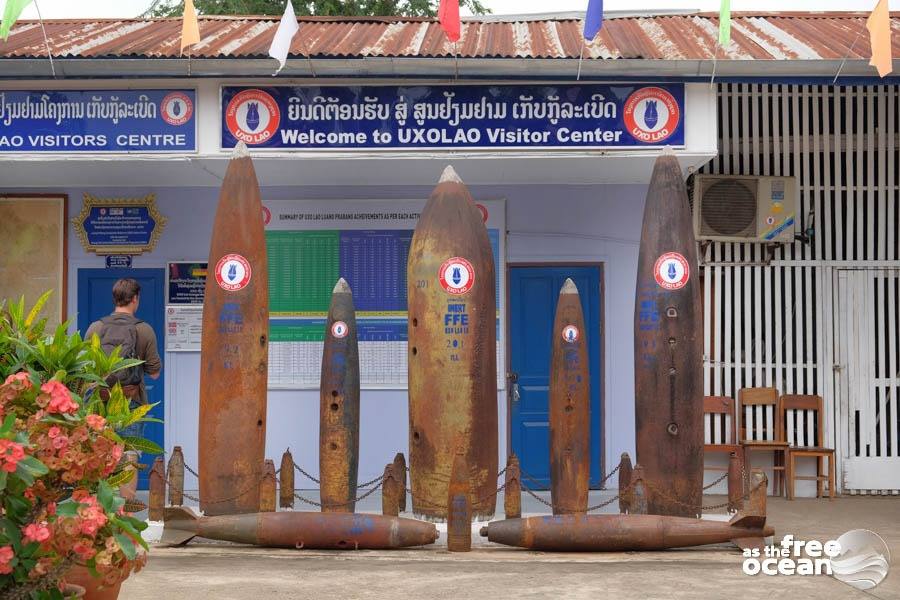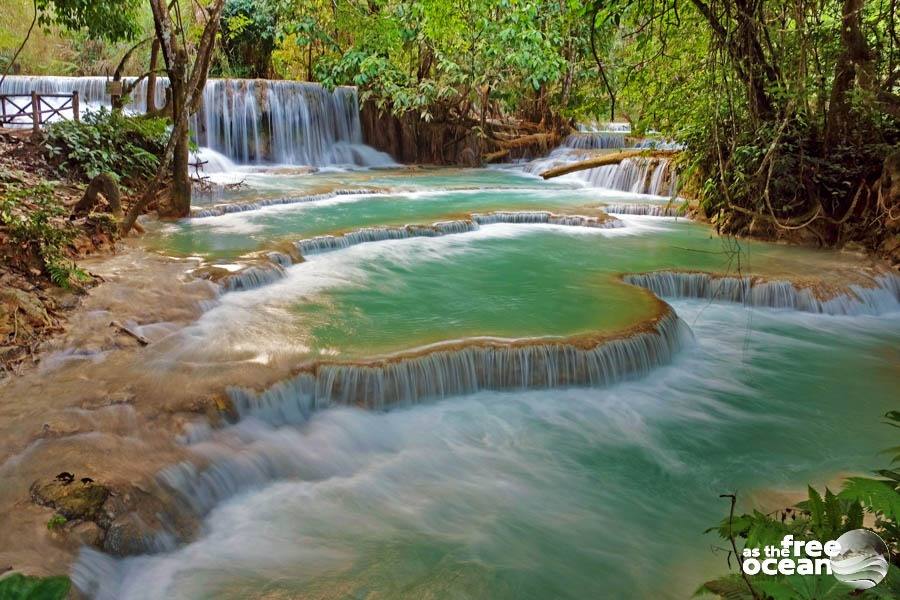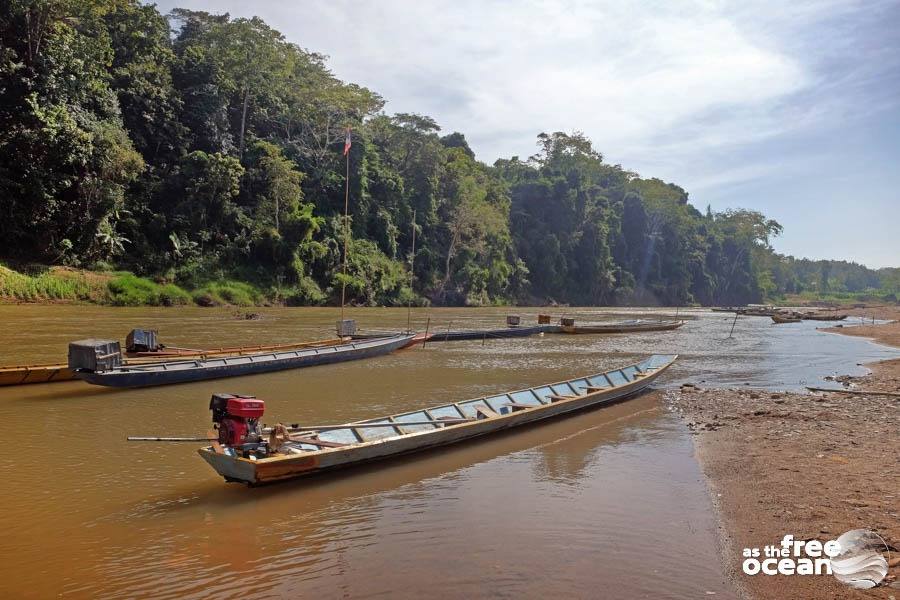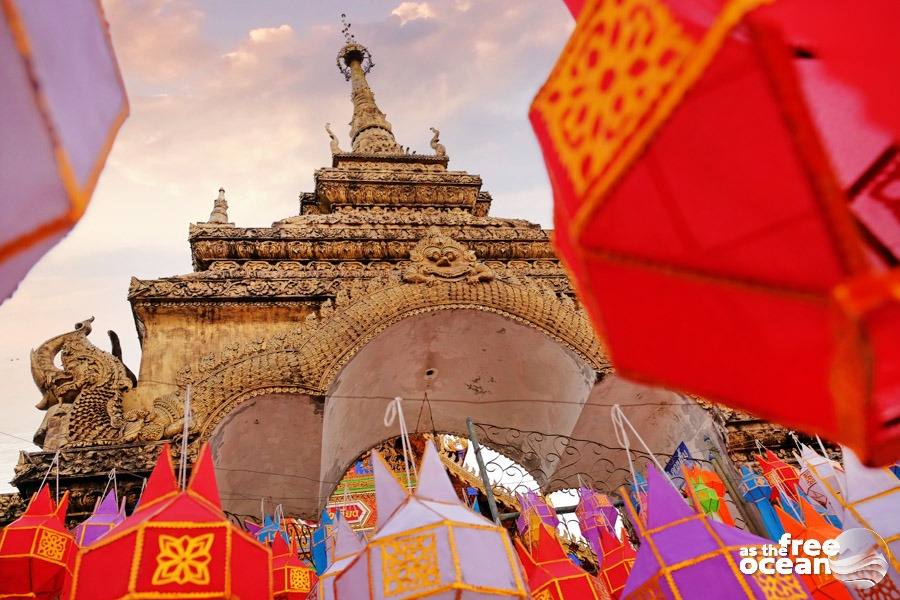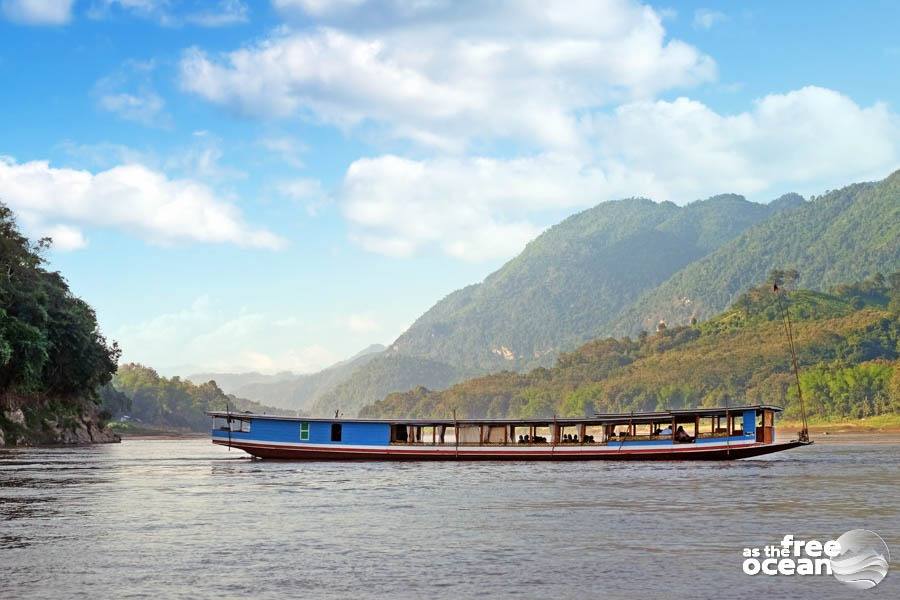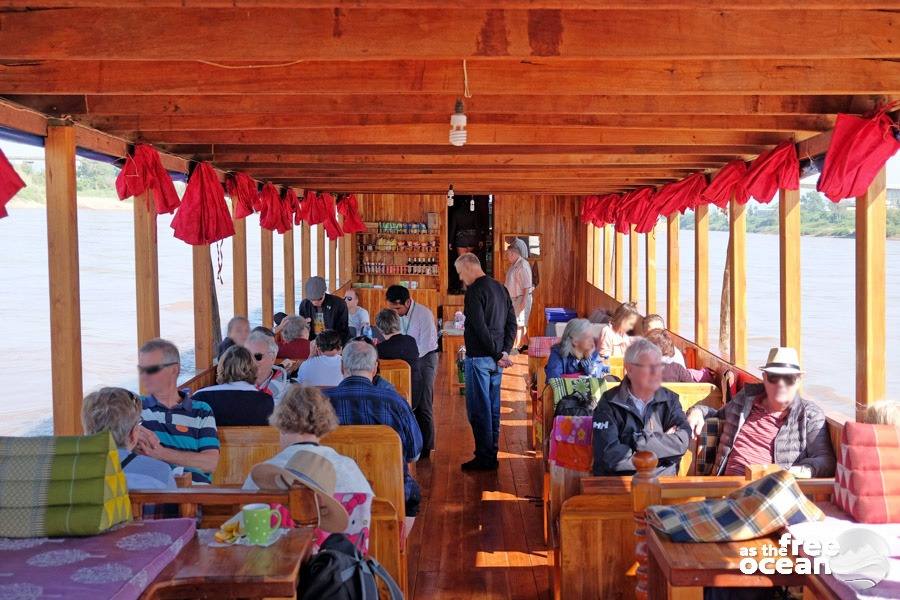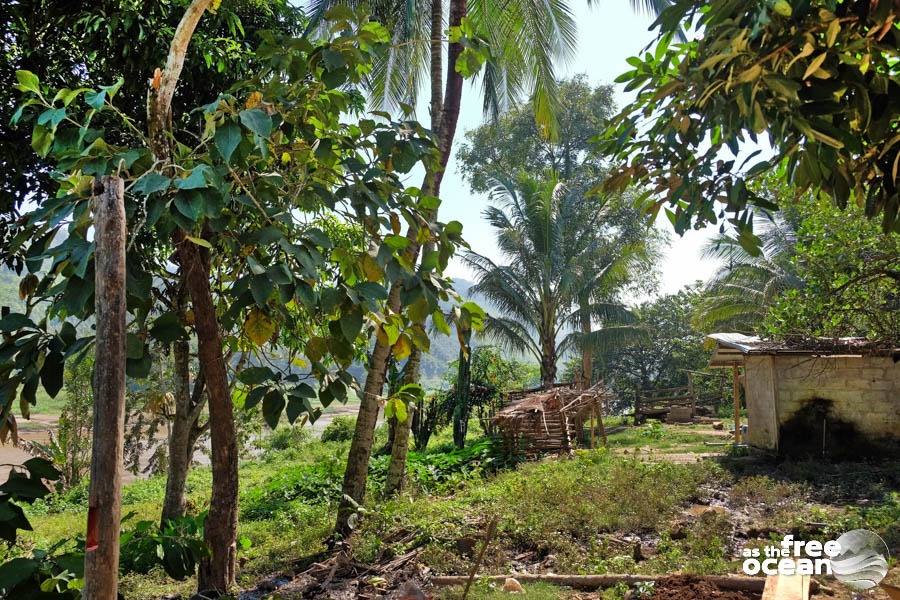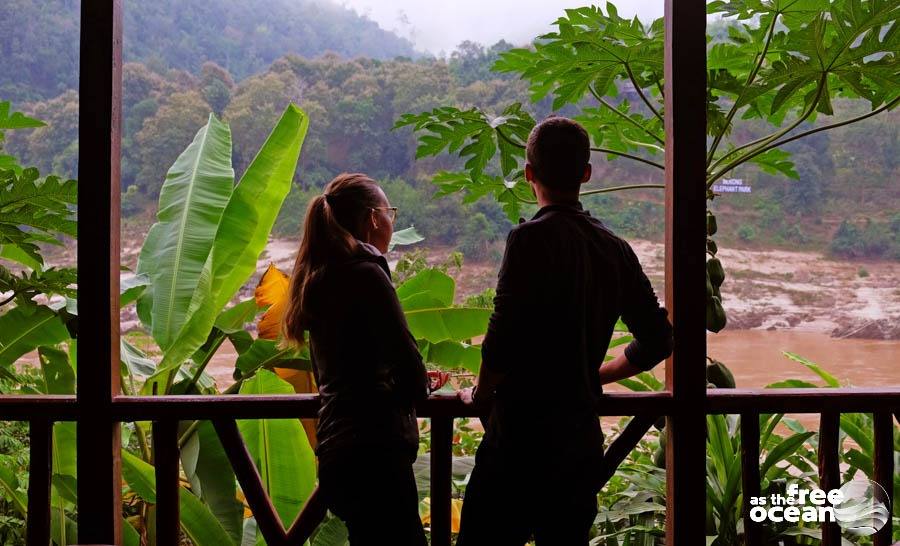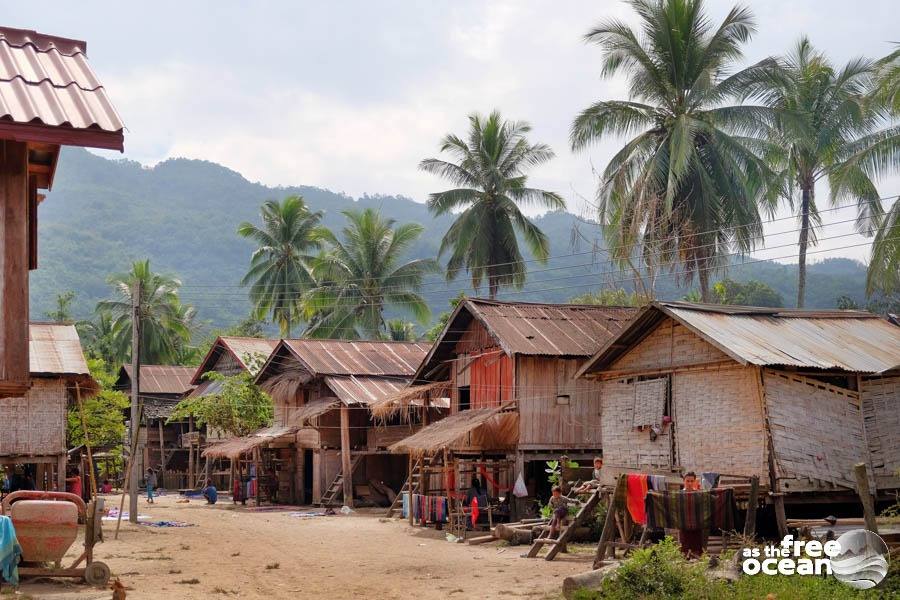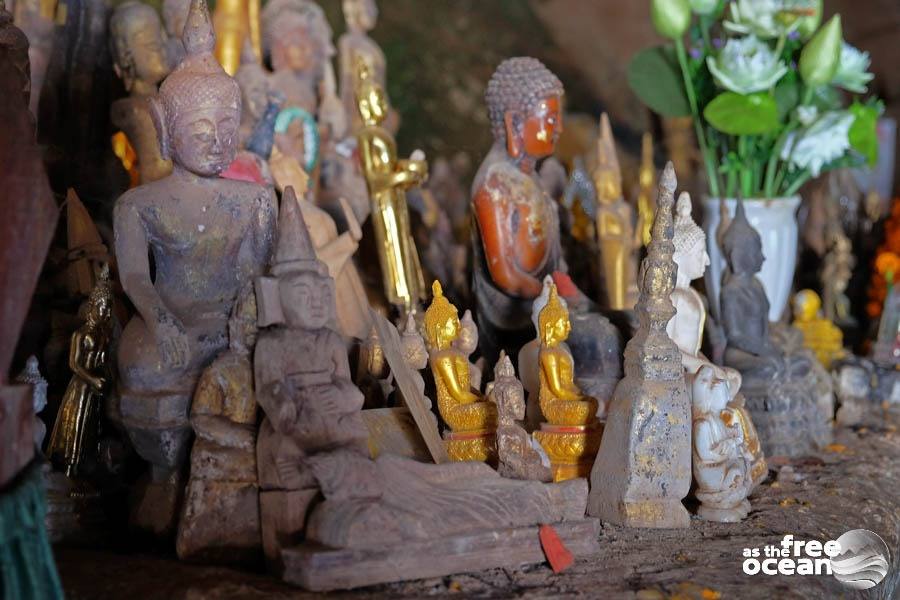I must say that Laos was one of our favorite destinations in Asia, although we knew little about this country and the time that we spent there was indeed short. But there were too many experiences that we wanted to squeeze in the two months and a half time that we reserved for Southeast Asia and we spontaneously decided to dedicate more of it to exploring Vietnam, decision which brought us at the end of our stay in Laos to Dien Bien Phu.
Nong Khiaw was definitely the right place to end our trip in Laos and to feel even more in love with the natural surroundings of the country, but it also felt more isolated than other places and while trying to find connections with the Vietnamese border we found ourselves left with few options only. We booked a private transfer to the bus station in Pak Mong, from where we took the bus which was connecting Luang Prabang with the Vietnamese border, paying in total approximately 24 Euro per person. Another option was taking a speed boat along the Nam Ou River to Muang Khua, from where travelers can continue by bus till the border. At the time when we were there we found out about multiple construction projects for building dams, which were also threatening the river cruise industry and that will make certain routes on water not accessible anymore in the future.
The bus from Nong Khiaw to Dien Bien Phu
The bus ride itself felt long but somehow entertaining while watching the way local people travel. They usually take with them lots of luggage, including sacks of rice and even animals. Buses in Laos are always great opportunities to engage into authentic experiences. But don’t expect much comfort in return.
The bus ride took much longer than expected and we arrived late in the evening at the border, where we had to go through two border filters on both sides of it. The process on the Laotian side went smooth and fast but later on the Vietnamese side it took much longer. We were even confronted with the situation of being asked for extra money by the border officers due to the extended working hours caused by our late arrival. We protested at first against it, even if it was a small fee, but eventually felt forced to pay it as we were already very late and we hoped to still be able to catch a night bus to Sapa, in the northern part of Vietnam..
Unfortunately, the last bus left before our arrival and we had to spend the night in Dien Bien Phu, but luckily we found a very cheap room right in front of the bus station and could enjoy delicious noodles at one of the many small restaurants in the area. We did not even have to look for the accommodation as locals approached us immediately with offers.
Bus from Dien Bien Phu to Sapa
Direct buses and minibuses to Sapa leave every morning at 6:30 and 9:00 or later in the evening at 17:30 and 18:30. Most offers are for buses leaving for Hanoi or some of the main touristic destinations in the northern part of the country.
We left the next morning with the earliest minibus, arriving eight hours later in the mountains close to the Chinese border, where we hoped to spend a few days admiring the impressive rice fields that make Sapa such a famous destination. But unluckily the only impressive thing that we discovered in the three days in Sapa was the thick mist that surrounded the mountain and the cold air that convinced us to leave early towards the sunnier places of the country. The next stop on our route across Vietnam was the capital city, Hanoi, where we got to learn about the busy city life of the Vietnamese people.

